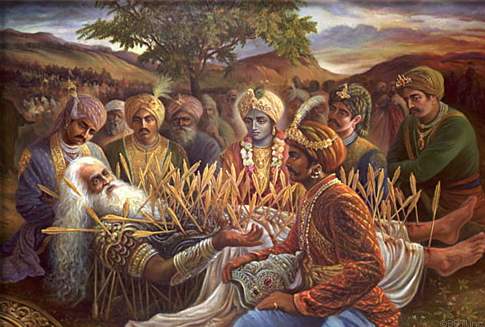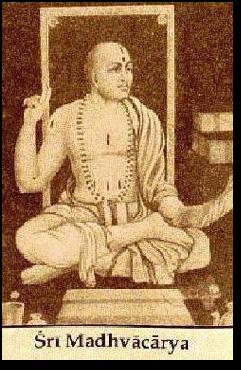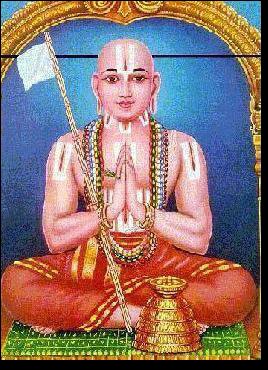ok guys time to vex it up madhwa and ramanuja were from kali age so don take their personal teachings to ur head
the question remains how one would determine what is the exact teachings of treta and dwarpara yuga unless one had received them through someone existing in kali yuga (unless you are laying claim to possessing direct experience, having lived in treta or dwarpara yuga)
one proposes dwaita and the other adwaita and they r master manipulators of religion
actually ramanuja proposed
visishtadwaita or
qualified non-dualism. ie, the living entities are believed to be qualitatively one with the Supreme and at the same time quantitatively different.
and it was madhvacharya who proposed dvaita-dvaita-vada, or pure dualism, ie that there is an irrevocable difference between the living entity and god (namely in quantity) which establishes one as the constitutional eternal master and the other as the constitutional eternal servant - I can only assume that you are not familiar with their philosophical treatises since seeing any essential differences between the two is usually the business of ecclesiastical hair splitters
and met to their timely situations and morover we should stick to the original treta and dwapara teaching
and those teachings are?
u know it is in the nature of blue blooded brahmins to manipulate teachings and in turn manipulating the society its high time we stick to the oldest vedic system of the society
how do you propose to determine what actual religious principles are unless you utilize brahminical resources (either resources in terms of scripture or resources in terms of personal qualification, ie
BG 18.42: Peacefulness, self-control, austerity, purity, tolerance, honesty, knowledge, wisdom and religiousness — these are the natural qualities by which the brāhmaṇas work.
some vaishnavas tell us not visit shiva temples and viceversa assuming we know the fact that they are the operator and destroyers
There are many shiva deities installed in or near vishnu/krishna temples - there are many places strongly associated with Lord Siva that are inextricably connected to vishnu (eg Bhubeneswar)
There are many prayers vaisnavas offer to shiva
vRndAvanavani-pate! jaya soma soma-maule
sanaka-sanandana-sanAtana-nAradeDya
gopIzvara! vraja-vilAsi-yugAGghri-padme
prema prayaccha nirupAdhi namo namaste
"O gatekeeper of Vrindavana! O Soma, all glories to you! O you whose forehead is decorated with the moon, and who is worshipable for the sages headed by Sanaka, Sanandana, Sanatana and Narada! O Gopisvara! Desiring that you bestow upon me prema for the lotus feet of Shri Shri Radha-Madhava who perform joyous pastimes in Vraja-dhama, I offer pranamas unto you time and again!"
well i think if the vaishnavas think there is no need to respect shiva
then obviously you have an incorrect understanding of vaishnavism
SB 12.13.16: Just as the Gańgā is the greatest of all rivers, Lord Acyuta the supreme among deities and Lord Śambhu [Śiva] the greatest of Vaiṣṇavas, so Śrīmad-Bhāgavatam is the greatest of all Purāṇas.
they dont want reincarnation
and you do want to take another material birth?
and want to be operated infinitely
even in the material world we yearn to speak words of eternality (all the time while our molars are rotting)
it is all in the cycle boys there is no escaping for that unless sri maha vishnu and pareameshwara come and announce u the official breakup in their working which i doubt both of them (shaivas an vaishnavas) had witnessed so don get carried away
perhaps you should explain how your views differ from standard atheism
stick to the genuine and the most scientific and oldest religion on earth follow the river boys not its tributaries.
fine, but perhaps you could explain what is the most scientific and oldest religion (and also how you came to understand it by not taking the teachings of anyone who appeared in kali yuga)




